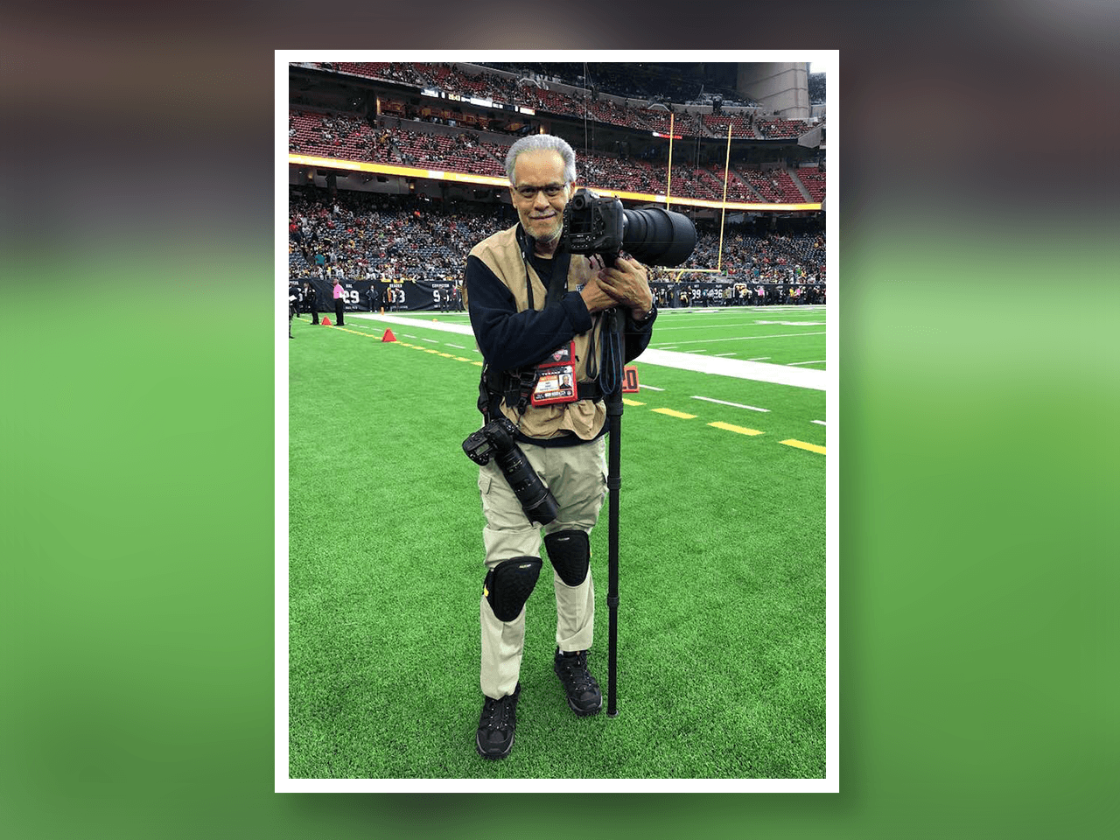“I’m in control of my life now.”
Rudy Hardy, a former federal law enforcement officer, knew something was wrong nearly 20 years ago. “The tremor started to show up on the pistol range. I could control it, but that’s where it started showing up.”
For years, Rudy thought he was living with essential tremor, a common neurological disorder that often occurs in people age 40 and older. The symptoms gradually became worse, and none of the oral medications he tried worked. When they did, they made him very sick.
“I’d get very self-conscious about the tremoring and the balance issues,” said Rudy, who is also an avid sports photographer. “Last football season, I shot half of the season, but one day my legs were stiffening up on me. I just didn’t feel right on the field, and that was it.”
In a desperate search for answers and after years of uncontrolled tremors, doctors determined that Rudy’s movement disorders had little to do with essential tremor and everything to do with the tremors associated with Parkinson’s disease. While different, essential tremor and Parkinson’s disease can have overlapping features, which may explain why Parkinson’s is frequently misdiagnosed as essential tremor.
But Rudy was determined to get his life back. “I wasn’t about to go through life tremoring; that’s not my way of living.” That’s when his neurologist recommended a life-altering treatment option at Baylor St. Luke’s Medical Center: deep brain stimulation. One of the most advanced therapies in the field, DBS consists of placing two probes into the parts of the brain that aren’t behaving correctly. The DBS system sends electrical pulses into the brain — similar to a cardiac pacemaker — to regulate brain activity.
Dr. Sameer Sheth, a neurosurgeon at Baylor St. Luke’s, performed the procedure over the course of two weeks. The goal of the first surgery is to implant the probes into the brain, and the second procedure consists of running the wires from the probes to the implanted battery in the patient’s chest.
“The results have been amazing. As soon as they turned it on, my right hand stopped tremoring. It’s unbelievable,” said Rudy of his experience with the DBS treatment. “When I get overly excited, the tremor would come back just a little bit, but I can control that by calming myself down, whereas I couldn’t control it before.”
Rudy is now retired from his career in law enforcement but continues to be active in his field. He plans to return to Houston Community College in the spring of 2020 to teach Criminal Justice. He’s even considering reconnecting with his passion for sports photography since this activity has always given him so much joy.
Dr. Sheth and Dr. Ashwin Viswanathan, who also are associate professors of neurosurgery at Baylor College of Medicine, were among the first group of doctors in Texas to use this most advanced version of deep brain stimulation, which includes extremely precise robotic surgery and the latest generation of DBS devices. By adopting these advances, they seek to make the treatment of Parkinson’s more effective for more patients.






